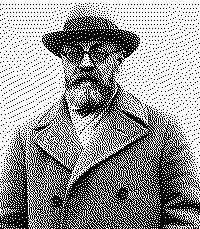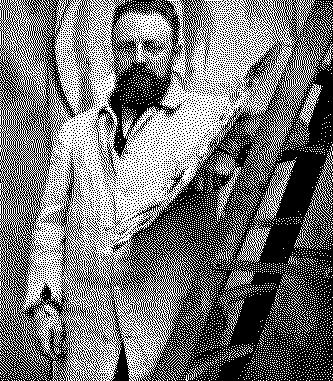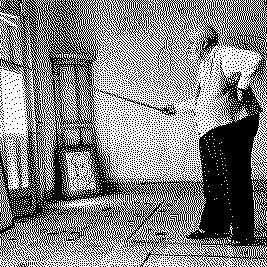Artists/Henri Matisse
Fast Facts
Leader in Fauvism
Matisse is often regarded as the leading figure of the Fauvist movement, which emerged in the early 20th century. Fauvism is characterized by bold, often dissonant colors and simplified forms. His work from this period, such as "Woman with a Hat" (1905), is notable for its radical use of color.
Diverse Artistic Range
Matisse's work spans various mediums, including painting, drawing, sculpture, and printmaking. He is also celebrated for his innovations in paper cut-outs, especially in his later years. Works like "Blue Nudes" (1952) and "The Snail" (1954) are exemplary of this technique.
Cut-Outs
In the final years of his life, when illness left him unable to paint, Matisse began creating "cut-outs", a new medium that straddled painting and drawing
Biography



Henri Matisse, born on December 31, 1869, in Le Cateau, Picardy, France, is often celebrated as the most pivotal French painter of the 20th century. He led the Fauvist movement around 1900 and continually explored the expressiveness of color throughout his career. His works are primarily domestic or figurative, with a noticeable Mediterranean flair in their execution.
Matisse's journey into the world of art began rather unexpectedly at the age of 20. Initially indifferent to art, his life took a significant turn following a severe bout of appendicitis in 1890. During his recovery, he began painting, initially copying from a set of colored reproductions. This newfound passion led him to abandon his legal studies and clerkship in a law office in Saint-Quentin to move to Paris in 1891, aiming to become a professional artist.
Despite his late start, Matisse was anything but a stereotypical art student. His work ethic was intense, driven by the values of diligence and haste instilled in him since childhood. This approach characterized his entire career, a testament to his middle-class, northern French upbringing.
In Paris, Matisse enrolled at the Académie Julian and the École Nationale des Beaux-Arts, studying under masters like William-Adolphe Bouguereau and Gustave Moreau. His early works were traditional still lifes and landscapes. Matisse's style underwent a significant transformation after encountering the work of Impressionism and Post-Impressionism, particularly through his interaction with the Australian painter John Russell, who introduced him to the bright colors and styles of Vincent van Gogh.
Matisse's reputation as one of the Fauves, or "wild beasts," was cemented by his works between 1900 and 1905, marked by intense colorism. After 1906, he developed a style emphasizing flattened forms and decorative patterns, earning critical acclaim in the 1920s while maintaining the classical tradition in French painting. From 1930, he adopted a bolder simplification of form and, later in life, turned to cut paper collages due to ill health, further solidifying his position as a leading figure in modern art.
Henri Matisse passed away on November 3, 1954, in Nice, France, but left behind a legacy that spans over half a century, showcasing his mastery of the expressive language of color and drawing (Encyclopedia Britannica) (Wikipedia).
Importance
Henri Matisse's significance in the art world is unparalleled, with contributions that have profoundly influenced modern art. His legacy is complex, spanning innovative artistic practices, pioneering movements, and influential roles beyond that of just an artist.
Leader of Fauvism and Modern Art Innovator
Matisse, along with André Derain, led the Fauvism movement (1904–1908), known for its wild brushwork and vivid colors. This movement marked a significant departure from traditional art forms, blending elements of Post-Impressionism and Pointillism and setting a precedent for abstract representation in modern art. Matisse's bold use of color and form contributed to his reputation as one of the greatest colorists of the 20th century and a revolutionary figure in modern art (The Art Story) (My Modern Met).
Exploration of Color and Form
Throughout his career, Matisse aimed to uncover the "essential character of things" and aspired to create an art of "balance, purity, and serenity". His periods of artistic exploration ranged from his focus on art and decoration, experimentation with Cubism, to his later years in Nice, which were characterized by lighter themes and orientalism. His evolving styles always circled back to his foundational interests in color and form (The Metropolitan Museum of Art).
Pioneering Use of Cut-Outs
Faced with physical limitations in his later years, Matisse innovated the art of cut-paper collages, or "cut-outs". This technique involved arranging colorful paper shapes into lively compositions, marking a significant departure from traditional painting and sculpture. These works, not quite painting and not quite sculpture, represented a new form of artistic expression and have been celebrated as his final artistic triumph (My Modern Met).
Influence Beyond Painting
Matisse was not only a painter but also engaged in various artistic roles including ceramicist, designer, writer, art theorist, and more. His involvement in different mediums reflects the broad scope of his creative influence and his enduring interest in exploring new artistic possibilities (The Museum of Modern Art).
Cultural and Artistic Exchanges
His friendships and rivalries, most notably with Pablo Picasso, played a significant role in the development of modern art. Despite their competitive relationship, both artists pushed each other to explore new artistic boundaries. Matisse's engagement with various cultural influences, including African and Islamic art, further enriched his work and contributed to the diversification of modern art's visual language (My Modern Met).
Technique
Henri Matisse's technique evolved dramatically over his career, reflecting his relentless pursuit of artistic innovation and expression. His methods spanned from early divisionism to his revolutionary cut-out technique, underscoring his role as a pioneer in modern art.
Early Works
Matisse's initial style was influenced by the works of Cézanne, Rodin, and Van Gogh, focusing on color sensibility and compositional skills. His early technique involved divisionism, using unblended color patches on the canvas, emphasizing forms with relatively reserved colors and subject matters (Arthive).
Fauvism and Color Exploration
During the Fauvist period, Matisse became known for his intense use of color. He painted in bold, solid blocks, sometimes outlined to enhance their impact. This period was characterized by a revolutionary approach to color and form, often leaving brushstrokes visible and employing a vibrant palette (Wikipedia).
Nice Period
After relocating to Nice, Matisse's work entered a phase where his primary subjects were female figures or odalisques, depicted in exotic and luxurious settings. This period marked a shift towards a more relaxed and decorative style, with paintings infused with bright colors and southern light (The Metropolitan Museum of Art).
Cut-Outs
In his later years, especially after being confined to a wheelchair, Matisse developed the cut-out technique. He would cut painted paper into various shapes and arrange them into compositions, blending color and line in a new way. This technique allowed him to explore form and color with renewed freedom, leading to significant works that were both abstract and highly expressive (The Museum of Modern Art) (TheCollector).
Mounting and Preservation
Matisse was very concerned with the preservation of his cut-outs. Initially, cut forms were adhered to the underlying paper with small dabs of glue. Later, a traditional painting relining process was adapted to meet the specific needs of mounting the cut-outs, ensuring their long-term preservation (The Museum of Modern Art).
Experimentation Across Mediums
Throughout his career, Matisse also experimented with various mediums, including book illustration, tapestry design, and glass engraving. This exploratory spirit extended to his work on murals, where he innovatively used cutout shapes of previously colored paper to build up compositions (The Art Story).
Materials and Tools
Matisse used a variety of materials and tools, from soft hair brushes and charcoal for sketching to bristle brushes and a palette of acrylic colors for painting. His choice of tools and materials was as varied as his artistic output, reflecting his adaptability and creativity (Artsy).











